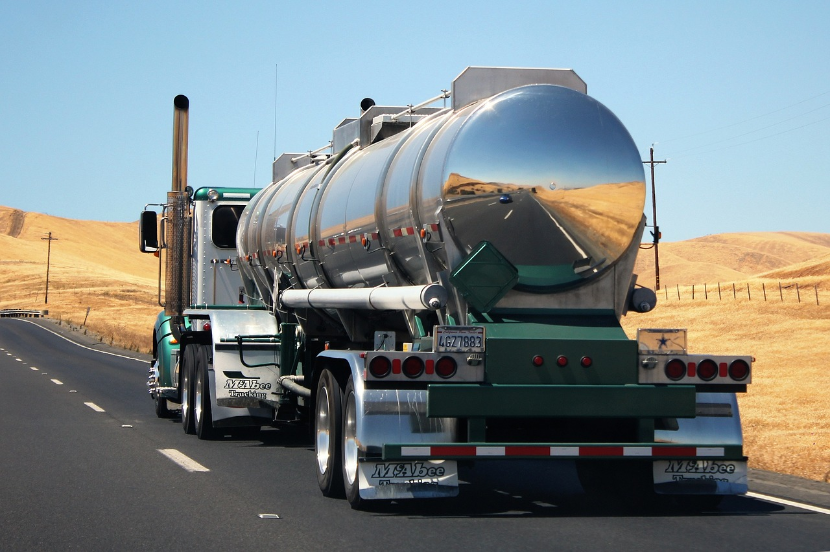“I’m an actor… I do a job and I go home. Why are you interested in me? You don’t ask a truck driver about his job.” — James Gandolfini
I’ve been struck recently by how much we don’t talk about process safety once the hazardous chemicals we make have been loaded and shipped. Process Hazard Analyses stop at loading. Once the product is on the road (or the tracks or the sea), our job is done.
But process safety—the concern with fires, explosions, and toxic releases—doesn’t end at the fence line. The Wikipedia list of ammonium nitrate disasters (the go-to reference for most students of process safety) lists 35 incidents. Of those, over a third involved the transport of ammonium nitrate. Four were explosions of cargo ships loaded with ammonium nitrate. Three were explosions of freight trains pulling cars loaded with ammonium nitrate. Six were explosions of trucks hauling loads of ammonium nitrate.
It’s Not My Job
Process Safety Management (with capital letters), the OSHA regulation found in 29 CFR 1910.119 does stop at the fence line. In fact, it doesn’t begin until a trailer has been dropped or the locomotive engine pulls away. At that point, the trailer or railcar become storage vessels. Before then, and while out on public ways, hazardous materials are not under OSHA jurisdiction, but the jurisdiction of the Department of Transportation. And the DoT has rules and regulations for vehicles, drivers, and loads.
That’s as it should be. The jurisdiction should be where the expertise is. At the plant level, however, there are areas where the expertise of process safety professionals can make it safer on the road.
Drivers
All drivers should all have a CDL, a commercial driver’s license. But some have a CDL, while others have a CDL and 40 years of experience. An experienced driver is more likely to handle unusual road conditions with greater skill, but experience driving doesn’t necessarily translate into experience hauling the load they’ve picked up at your plant.
Talk to them. Explain the hazards of the material. Don’t just hand them a Safety Data Sheet and expect them to make sense of it. You’ve seen Safety Data Sheets; it takes a certain amount of training and experience to make sense of what is there. It is unreasonable to expect a truck driver, who is hired for their skill in operating a rig, to also be skilled in deciphering a Safety Data Sheet, although they certainly may be. In case they’re not, though, talk to them.
Ask them what they would do in the event of a brake fire. A jackknife. A collision that results in a leak. True, it’s not your job to know the answers to these questions, it’s the driver’s job. But you can ask the questions. And if they don’t know the answers, help them to figure them out.
Placards
Before a truck leaves your facility, make sure that it is properly placarded. Those placards are not for you. You know more about what is in the truck than any placard is going to tell you. They’re not for the driver. The driver has shipping papers that tell them about their freight.
No, the placard is for any emergency responder that must react to an incident involving the truck. Emergency responders are trained to approach truck incidents from upwind and uphill, and then scan the truck for placarding before deciding how to approach the incident. The few seconds they take to do this can make the difference between life and death. And all too often, when there are fatalities or other injuries during an incident, it is the first responders that suffer them.
They don’t have a chance of doing the right thing if the placards are wrong.
Trucks
When the truck first arrives to pick up a load, have a look at it. Does it appear to be in good repair? Brake fires typically occur within the first 50 miles of a trip. Do the brakes smell hot? Is the trailer clean and dry? While quality issues are typically the only consequence of cross-contamination between loads, cross contamination may also result in incidents on the road.
Before the truck leaves, have another look. Are valves securely closed? Are caps in place and secure. The driver is responsible for the load, but a second set eyes can help.
We Have a Responsibility
Process safety on the road is different from process safety in the plant. It is under different jurisdiction, and for good reason. But that doesn’t mean that we, as process safety professionals, don’t have a role to play. Not only can we make our plants safer, we can make the road safer.
When a headline screams “Chemical Spill on I-70 Leads to Fire and Evacuations”, the public isn’t thinking, “The trucking industry just can’t operate safely.” No, they’re thinking, “The chemical industry is sending these dangerous chemicals through our community.”
Until we get to some point in the distant future when everything is made and used in situ, then that is going to be the case. So, like it or not, we have a responsibility to not only make our plants safer, but to make the roads safer as well.
